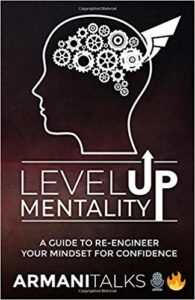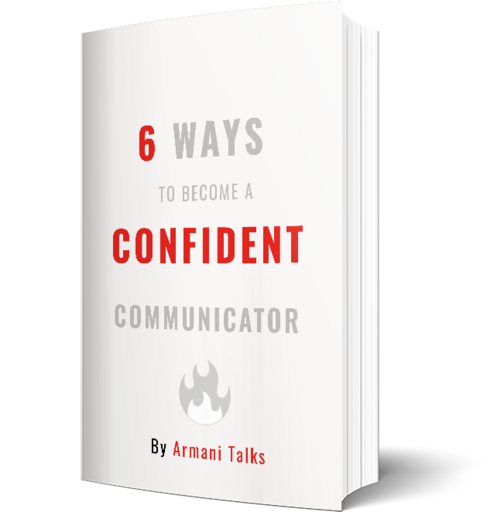How to Articulate Thoughts into Words
There are certain words that are difficult to define.
One of those words is:
- Storytelling.
When you think about it, this word is difficult to define for a few reasons:
1st reason is that it means different things to a child vs an adult.
2nd reason is that it seems like the child’s definition is better than the adult’s.
An adult’s definition of storytelling is vague.
You’ll see marketing experts & branding strategists encouraging business owners to:
Find their story.
‘With a story, you will definitely stick out in the marketplace!’
Then, they will have these business owners do a series of acts to create a narrative.
At the end of it, the business owners know how to execute acts, but are hazy on their definition of a story.
When asked for a definition, they will describe the acts they just completed.
While a kid will say:
Something that captures my imagination.
No offense to the kid, but I don’t like that definition either.
I believe storytelling is:
Structured thoughts.
To structure thoughts, you need to learn how to articulate thoughts.
To learn how to articulate thoughts, you need to spot important thoughts.
Mind in Motion
When you picture technology, what do you think?
‘I picture gizmos, gadgets, and electricity.’
This is the common interpretation.
When you look closer, you’ll notice that technology is structured knowledge.
- The technical definition of technology = Applied science.
- Science = Knowledge of a field.
From that, we combine & mingle different components of nature to create practical tools.
That’s the essence of it all.
Likewise, with storytelling, wisdom is equivalent to science.
- Experiences = Data.
- Making sense of that data = Wisdom.
Wisdom gained internally is known as introspection.
Wisdom delivered externally is known as storytelling.
The better you introspect, the better you tell stories.
The better you tell stories, the more you learn how to articulate thoughts.
This is a logical sequence of steps to think through.
Which Thoughts Are Important?
Humans have roughly 30,000 thoughts per day.
If a person was trying to learn how to articulate 30,000 thoughts, then they’d be talking for a long time!
Instead, let’s find the right thoughts to articulate.
Picture a clear river that you can see through.
In this river, there are tons of fishes swimming by in 1 direction of the current.
Most of the fish are gray.
Every now and then, there will be a pink fish that swims on by.
Your goal is to ignore the gray fish & grab the pink fish with your hand.
There are symbols in this analogy.
The direction the river is flowing is the theme of your talk.
Without a direction, the fish will be flowing everywhere.
It would be difficult to catch anything.
Likewise, a theme of your talk gets your thoughts flowing in 1 direction.
Now it’s easier to grasp…. however, we can still do better.
That’s where the pink fish comes in.
The pink fish is a meaningful thought.
‘Armani?’
What’s up.
‘How do you define what is a meaningful thought?’
Ah…now it’s time to get deep.
Subjective Science: How to Articulate Thoughts Better
When we are dealing with thoughts, we are dealing with subjectivity.
Subjectivity is something that is directly experienced.
What I consider an important thought on a subject may be useless to you.
And vice versa.
Therefore, I can’t tell you exactly how to spot your pink fish.
But I can tell you how I spot mine.
My idea of a meaningful thought is a thought charged with feeling.
‘Why is the feeling important?’
Because it keeps me grounded.
Focusing only on thoughts without feeling makes me feel overly intellectual.
I overthink.
While focusing only on feelings will risk me acting unhinged.
Low in poise & high in narcissism.
A thought charged with feeling is my pink fish.
When it comes, I aim to grab it.

How to Spot Pink Fishes
Imagine if I say ‘stop sign’ to 3 people.
- One person is Rohit. He is from Bangladesh.
- The other person is Sarah. She is from Florida.
- The last person is Miguel. He is from Brazil.
In Rohit’s country, the streets are chaos.
No one follows the streetlights.
Every driver is for themselves.
He barely knows what a stop sign is!
Sarah recently got a ticket for not stopping at the stop sign.
Her fine is hefty.
Miguel makes stop signs for a living & sells it over the world.
His business is his life.
In these 3 scenarios, the different people will have different interpretations of the word, ‘stop sign.’
- Rohit has no feeling.
- Sarah has a disgusted feeling.
- Miguel has an empowering feeling.
For Rohit, the ‘stop sign’ is not a pink fish.
For Sarah & Miguel, it is a pink fish.
‘A pink fish can exist for negative feelings too?’
Yes.
A thought with ANY feeling is a potential pink fish in my book.
Articulation Exercise
I want you to try out an exercise that will teach you how to articulate your thoughts better.
Here are the steps:
- Choose a theme for your talk.
- Spot the pink fishes.
- Articulate the pink fishes.
Since you’re warming up, find a theme that is connected to you.
Rather than talking about Martians invading Earth…
Find a topic that is highly personal.
Example:
If you’re starting a business, your talk can be about:
3 key lessons I wish I knew before starting a business.
Something like that.
The more personal it is, the more your feelings get engaged.
The more your feelings get engaged, the easier it is to spot the pink fishes.
That’s some logic.
A Storyteller = A Fisher
Great storytellers can connect ideas in compelling ways.
They weren’t always like that though.
Like anything great in life, practice is a must.
This storyteller practiced.
Worked hard.
Practiced some more.
It’s just like fishing.
When I present the challenge of capturing the pink fish in the crystal lake….
Here’s what is bound to happen:
- The person catches nothing.
- After some time, the person catches a gray fish.
- They want to give up.
- Days go by…
- Then they finally capture their first pink fish. Now they know they can do it.
- It’s just a matter of repetition at this point.
The process of reaching your hand into the river to grasp for the pink fish is the journey.
That’s equivalent to you accessing your mind & learning how to articulate thoughts into words.
This process is what creates compelling communicators that cannot be duplicated.
Practice away…
Fish away…
For more practical communication skills strategies, subscribe to the ArmaniTalks FREE daily newsletter.
– ArmaniTalks 





